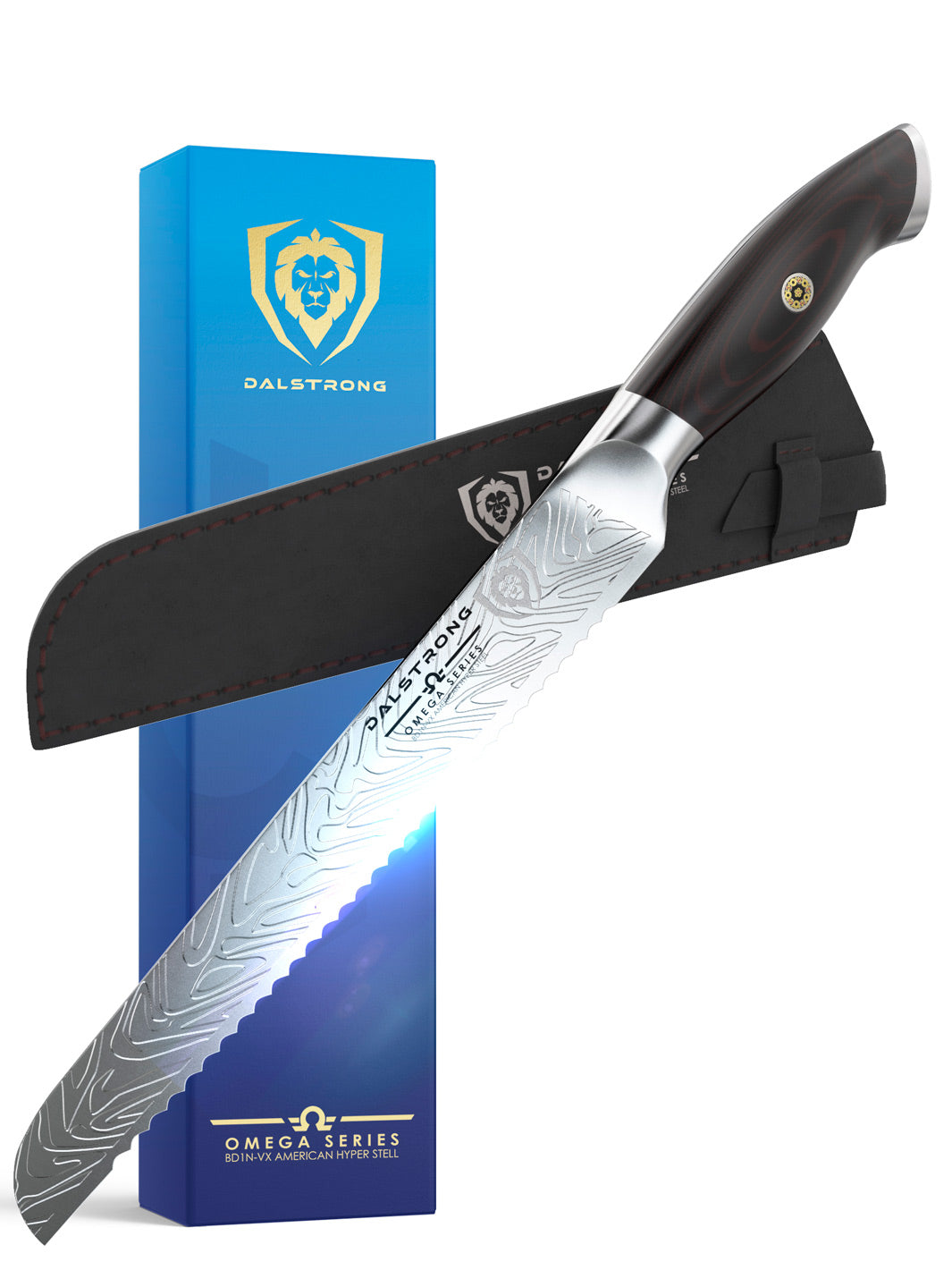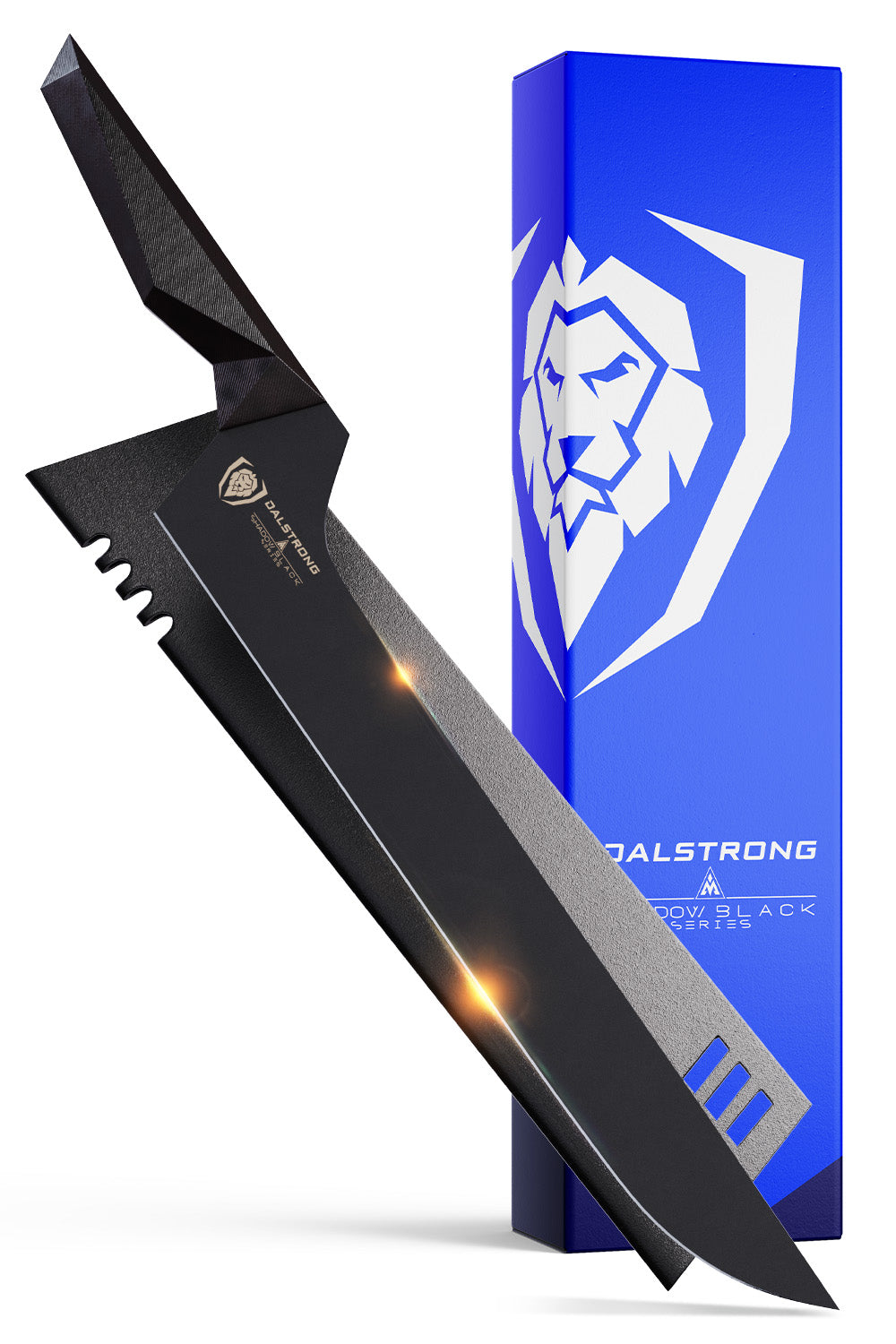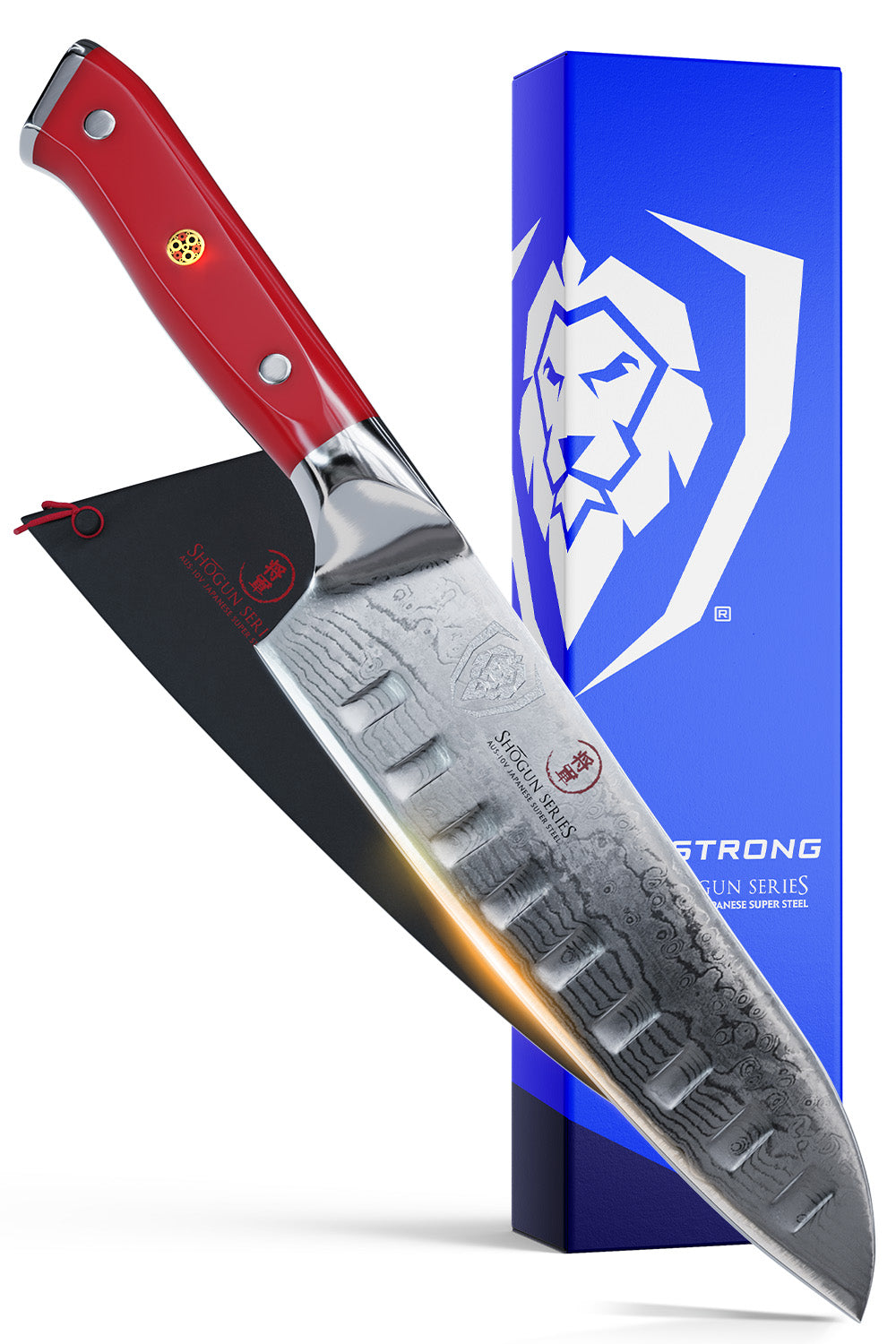When it draws up to kitchen tools, knives are an essential component of any chef's arsenal. They come in various shapes and sizes depending on what you need in the kitchen! In this blog, I’ll be taking you through everything you need to know about the different types of knives that can elevate the culinary enthusiast in you.
1. Versatility Of Knives And Their Benefits
 24-Piece Knife Block Set | Vanquish Series | NSF Certified | Dalstrong
24-Piece Knife Block Set | Vanquish Series | NSF Certified | Dalstrong
Folks, if there’s one thing we can agree on, it is that knives are the unsung heroes of the kitchen, with their versatility and benefits extending far beyond what meets the eye. Understanding the different types of knives, their build, and how to maintain them is super important if you want to use it to the best of its potential!
Whether you're a professional chef or a home cook, having your very own, go-to set of kitchen knives can make all the differene. Let’s discover the versatility and perks you can enjoy from good quality and sharp knives.
Types of Knives
There are numerous types of knives available, including utility knives, Nakiri knives, paring knives, chef's knives, santoku knives, carving knives, boning knives, tomato knives, fillet knives, bread knives, and steak knives. Each of these knives have a unique role, so prepping fruits, veggies, and meats can feel like a walk in the park.
Read about the best way to store your knives, here.
Precision Cutting
One of the primary benefits of having a variety of knives is the ability to achieve precise cuts. Whether you're slicing fruits and vegetables, cutting through meat, or chopping and dicing, having the right knife for the job ensures accuracy in your food preparation.
Knife Anatomy
Understanding knife anatomy is crucial for utilizing it effectively. These tools typically consist of a steel blade with a sharp edge, and the design varies depending on the type of knife. For example, a bread knife has a serrated edge for clean slicing through bread, while a chef's knife has a versatile, straight blade for various cutting tasks.
Knife Maintenance
Proper knife sharpening and maintenance are essential for extending their lifespan. Regular sharpening and honing can keep your knives sharp and ready for action – ensuring that they can cut through bone, meat, and other ingredients effortlessly.
Kitchen Tasks
Knives play a pivotal role in a wide range of kitchen tasks, from creating intricate fruit salads to filleting fish. Whether you need to peel fruits with a paring knife, carve a turkey with a carving knife, or cut through a tough steak with a steak knife, having the right tool at your disposal simplifies these tasks.
Versatility for Home Cooks
Not only are knives essential in professional kitchens, but they are also invaluable for home cooks. They help home chefs and professional chefs show their skills, which in turn offers restaurant-quality dishes in the comfort of their own kitchens.
Safety and Precision
Knives with sharp edges are not only efficient but also safer to use. Dull knives require more force, increasing the risk of accidents. A well-maintained, sharp knife allows for precise cutting with minimal effort.
2. Types Of Knives To Choose From

In this detailed guide, we’ll dive into the world of knives, what makes these knives unique, and the perks they bring to your kitchens!.
Common Types of Knives
Let's start by exploring some of the most common types of knives that you can choose from.
Chef's Knife
The chef's knife, also called as a cook's knife, is the workhorse of the kitchen. It typically has a broad, curved blade that tapers to a sharp point. This knife is a must in your kitchen, no matter how well you cook because it just ‘gets it right every time’. It is simply perfect for chopping, slicing, and dicing a wide variety of fruits and veggies, which makes it the ultimate knife for any home cook or chef.
Paring Knife
Paring knives have shorter, narrow blades that are perfect for precision tasks such as peeling, trimming, and shaping fruits and vegetables. They are perfect for working with small to medium fruits and veggies like tomatoes, apples, pears, peaches, mushrooms, and more.
Santoku Knife
Originating from Japan, the Santoku knife has a shorter and wider blade than a traditional chef's knife. This knife is ideal for slicing, dicing, and chopping, which is why it’s also incredibly popular in Asian kitchens.
Bread Knife
Bread knives have a serrated edge or serrations along the blade to effortlessly slice through crusty bread without crushing it or messing with it’s shape. They are also handy for cutting delicate pastries.
Carving Knife
Carving knives are perfect for slicing large cuts of meat, such as roasts and barbecues. They have long, thin blades that create precise, even slices.
Utility Knife
Utility knives are smaller in size but sharper than most knives because they can be used for a broad range of kitchen tasks, from slicing sandwiches to cutting fruits.
Steak Knife
These knives are particularly designed for cutting through cooked meat at the table. They often have serrated edges for easy slicing.
Boning Knife
Boning knives have narrow, flexible blades that make it easy to separate meat from bones. They are perfect for home cooks that prefer working with different types of meats.
3. Best Dalstrong Knives To Choose From
1. Chef's Knife 8" Shogun Series ELITE
This chef's knife from the Shogun series is like a kitchen superhero. It's not just a tool; it's a work of art. It is a razor-sharp kitchen powerhouse that can help with any task.
PROS:
- The AUS-10V Japanese super steel core provides exceptional edge retention, allowing you to cut longer without sharpening over and over again.
- The 67-layered Damascus blade is made with the Dalstrong Diamond Detailing method (D3), which showcases the stunning Tsunami Rose pattern that can turn heads.
- The military-grade G10 handle is impervious to heat, cold, and moisture.
- The handle has a non-slip grip and fitting design for superior hand control.
CONS:
- This knife is top-notch, but it comes with a higher price tag. It might not be affordable for everyone. But, think of it as an investment in a quality kitchen tool.
- Because it's super sharp and precise, this knife is best for experienced chefs or people who are really into cooking. If you're just starting out, it might be a bit challenging to handle.
2. Paring Knife 3.5" Shogun Series ELITE
The Shogun Series 3.5” paring knife from Dalstrong is perfect for chefs and cooks who want top-notch performance. It's made with precision and premium Japanese AUS-10V steel, which gives it excellent durability. The small, narrow blade and super sharp edge make it just right for detailed tasks.
PROS:
- The knife has a 67-layered high-carbon stainless steel covering and a G-10 Garolite handle, making it super durable. It's like a lifelong companion in the kitchen.
- The knife has Dalstrong’s cool Tsunami Rose blade pattern and a lion head logo, making it not just a performer but also a beauty in the kitchen.
- The handle is carefully designed, and the knife has a full tang design. This means you get excellent hand control, agility, and comfort when you're using it.
CONS:
- The 3.5” size of this paring knife is great for precise tasks, but it might not be the best choice for larger cutting or chopping jobs.
- Some folks might find the blade size to be too short.
3. Santoku Knife 7" Shogun Series ELITE
The Shogun Series 7” santoku knife from Dalstrong is a versatile kitchen companion, perfect for slicing, dicing, and mincing tasks with precision. The Japanese AUS-10V 'super steel' core, clad in 66 layers of high-carbon stainless steel offers you all the durability and edge retention that you need.
PROS:
- Crafted from premium materials, this knife has a G-10 Garolite which is built to withstand the test of time.
- The razor-sharp edge is honed to a sharp 8-12° degree angle for smooth and precise cuts every time.
- The Tsunami Rose blade pattern and engraved lion head logo add a touch of elegance to it.
CONS:
- While the Santoku knife is versatile, it may not be the best choice for heavy-duty tasks like cutting through bone or tough meats.
- Some folks may need time to adjust to a Santoku knife, especially if they are used to traditional, western chef's knives.
4. Slicing & Carving Knife 12" Valhalla Series
The Valhalla Series 12” Slicing & Carving Knife is the perfect fit for professional chefs, with a majestic 12” length and precision hand sharpening at 8-12 degrees on each side. Crafted from 5-layer stainless steel, it's the perfect tool to conquer any culinary challenge.
PROS:
- Hardened at 60+ Rockwell so the blade remains sharp and resilient even with frequent use.
- The celestial resin handle, stabilized wood, and stainless steel bolster not only provide strength but also an elegant and comfortable grip.
- Whether you're mincing, slicing, chopping, or disjointing, the curved blade helps with seamless, single-motion cuts.
CONS:
- Due to its long blade, this knife may be less suitable for small or intricate cutting tasks.
- While the blade is stain-resistant and easy to clean, its size may make it slightly more challenging to handle during cleaning compared to smaller knives.
5. BBQ Pitmaster & Meat Knife 9” Shadow Black Series | RED Edition

The Marauder Edition 9" Pitmaster knife combines form and function in a truly fierce culinary tool. The Shadow Black Series design, inspired by the F-117 Nighthawk Stealth Fighter jet, adds a unique and striking visual element to your kitchen arsenal.
PROS:
- The forked tip not only adds a bold aesthetic but also enhances functionality, allowing you to grab, flip, and skewer meat effortlessly.
- The blade is hand-sharpened to a precise 16-18° per side, ensuring clean and precise cuts with excellent edge retention.
- Crafted from high carbon 7CR17MOV-X vacuum-treated steel and featuring a non-reflective non-stick coating, this knife is built for robustness and corrosion resistance.
CONS:
- The unique design is not everyone’s cup of tea, especially if you prefer more traditional knives.
- Some people prefer working with boning knives or breaking knives.
4. Frequently Asked Questions
What is the most common type of knife?
The most common type of knife found in kitchens worldwide is the chef's knife, renowned for its versatility in slicing, dicing, and chopping various ingredients.
What are some types of knives?
There are numerous types of knives available for specific culinary tasks, including utility knives, paring knives, steak knives, and bread knives, each designed to excel in its respective function.













